08
2019
-
01
Sponge City Construction and Geosynthetics (7): Geosynthetics in Rainwater Wetlands and Regulating Ponds
Author:
1. Concepts and requirements of rainwater wetlands and regulating ponds
Rainwater wetlands:
Concept and structure: Rainwater wetland purifies rainwater by utilizing the functions of physics, aquatic plants and microorganisms. It is an efficient runoff pollution control device. Rainwater wetland is divided into surface wetland and subsurface wetland. It is generally designed as impervious wetland to maintain the water required by rainwater wetland plants. Rainwater wetland is often constructed and designed with wet pond to regulate storage capacity.
The structure of rainwater wetland is similar to that of wet pond, which generally consists of intake, front pond, swamp area, outflow pond, overflow outlet, slope protection and revetment, maintenance channel, etc.
Rainwater wetlands should meet the following requirements:
(1) Energy dissipation facilities such as gravel and energy dissipation sill should be set up at intakes and overflow outlets to prevent water from scouring and erosion.
(2) Rainwater wetlands should be pre-treated by setting up pre-ponds for runoff and rainwater.
(3) The swamp area includes shallow swamp area and deep swamp area. It is the main purification area of rainwater wetland. The water depth of shallow swamp area is generally 0-0.3 m, and that of deep swamp area is generally 0.3-0.5 M. Different types of aquatic plants are planted according to the water depth of 40.
(4) The regulating volume of rainwater wetland should be emptied within 24 hours.
(5) The effluent pool mainly prevents the suspension of sediment and lowers the temperature. The water depth is generally 0.8-1.2 m, and the volume of the effluent pool is about 10% of the total volume (excluding the regulated volume).
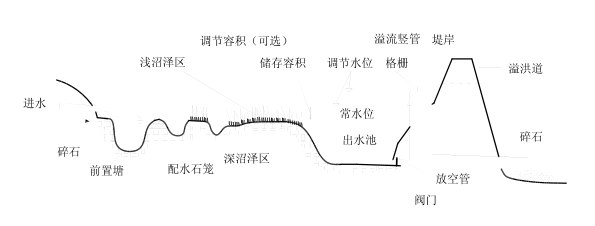
Structural Map of Rainwater Wetland
Regulating pond:
Concept and structure: Regulating pond, also known as dry pond, is mainly composed of water intake, regulating area, outlet facilities, slope protection and embankment. It can also have permeability function through reasonable design, and play a certain role in supplementing groundwater and purifying rainwater.
The regulating pond shall meet the following requirements:
(1) Energy dissipation facilities such as gravel and energy dissipation sill should be installed at the intake to prevent water erosion and erosion.
(2) Preponds should be set up to pretreat runoff and rainwater.
(3) The depth of the regulating area is generally 0.6-3 M. Aquatic plants can be planted in the pond to reduce the flow rate and enhance the purification effect of rainwater. When the bottom of the pond is designed to be permeable, the seepage surface at the bottom of the pond should not be less than 1 m from the seasonally highest groundwater level or rock stratum and less than 3 m (horizontal distance) from the foundation of the building.
(4) The outlet facilities of the regulating pond are generally designed as multi-stage outlets to control the water level of the regulating pond, increase the hydraulic retention time of rainwater (generally not more than 24 hours), and control the discharge.
(5) Safety protection and warning measures such as guardrails and warning signs should be set up in the regulating pond.
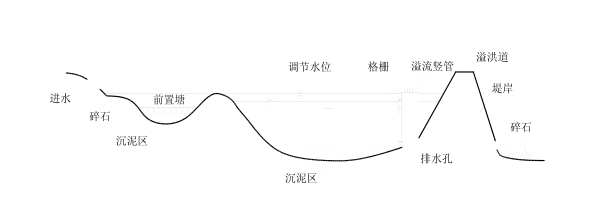
Typical Structural Map of Regulating Pond
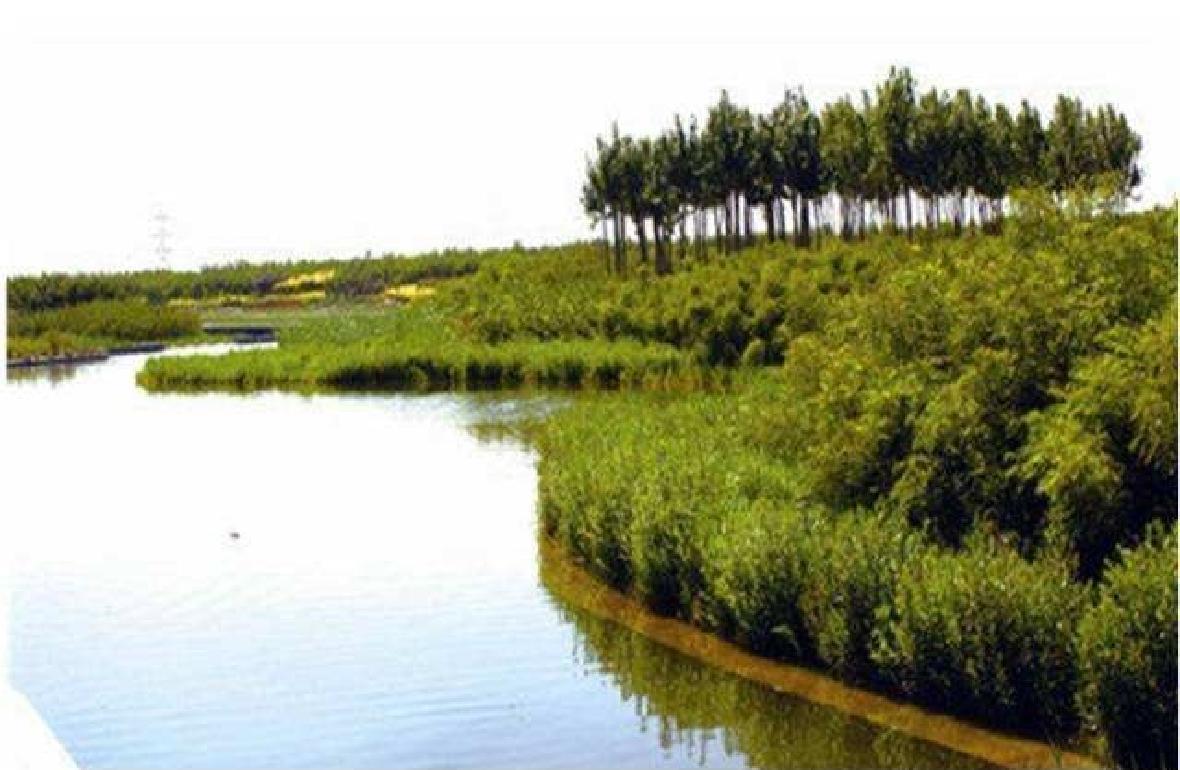
2. Types and Application of Geosynthetics in Rainwater Wetlands and Regulating Ponds
Geosynthetics is the general term of synthetic materials for civil engineering applications. As a kind of civil engineering material, it is made of synthetic polymers (such as plastics, chemical fibers, synthetic rubber, etc.) as raw materials, and placed in the interior, surface or between various soils. Geosynthetics commonly used in rainwater wetlands and regulating ponds in sponge cities are:
(1) Geotextiles
Geotextile is a new type of construction material used in civil engineering stipulated by the state. It is made of filament or staple fibers through different equipment and processes, and then interwoven with different fibers by needling and other processes. It is intertwined to standardize the fabric, so that the fabric is soft, plump, thick and stiff, so as to meet the requirements of different thicknesses. The length of filament can be divided into filament nonwoven geotextile or staple nonwoven geotextile. The tensile strength of filament is higher than that of staple. Because of its soft tear resistance and good filtration, drainage, isolation, reinforcement, impermeability and protection, it has light weight, high tensile strength, good permeability, high temperature resistance, freezing resistance, aging resistance and corrosion resistance.
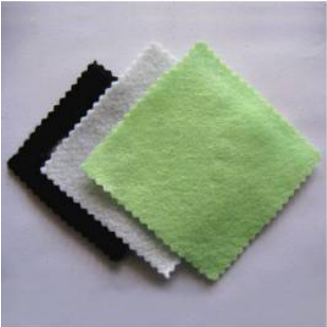
Geotextiles
(2) Composite geomembrane
Anti-seepage geotextile (composite geomembrane) is a kind of geotextile anti-seepage material, which is composed of plastic film as anti-seepage base material and non-woven fabric. There are mainly polyvinyl chloride (PVC) and polyethylene (PE), which have small proportion, strong elongation, high deformation adaptability, corrosion resistance, low temperature resistance and good frost resistance. Its impermeability mainly depends on the impermeability of plastic film.
As a new material, HDPE geomembrane has excellent anti-seepage, anti-corrosion performance, good chemical stability, and can be processed according to actual engineering needs. It has been widely used in dike, dam and reservoir anti-seepage of water conservancy projects, as well as in channels, reservoirs, sewage pools, swimming pools, housing buildings, underground buildings, garbage dump, environmental engineering, etc. Face is used as anti-seepage, anti-corrosion, anti-leakage, moisture-proof material. The technology has been widely used in developed countries since the 1930s, and HDPE geomembrane has been gradually used in various projects in China since the 1980s.
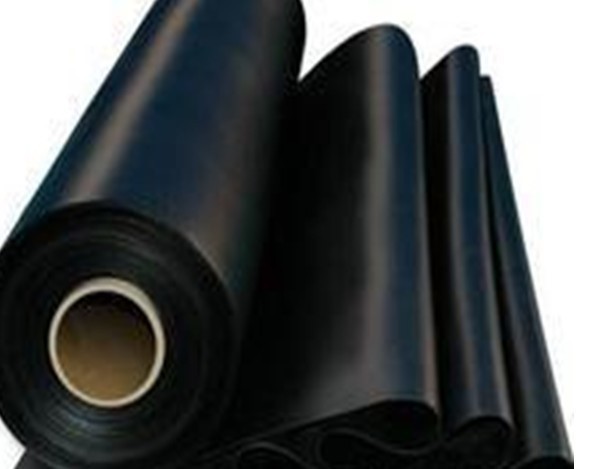
Geomembrane
(3) Grid network
Gebin network has long-lasting corrosion resistance. It can be used in mountain, River bank, wetland boundary and coastline geological structures. It can also be used for long-lasting slope protection, providing a stable living environment for the healthy growth of plants. Plants are loaded into the net, and eventually the material is decomposed gradually to become the cohesive strength of the root system. The flexibility of the device is the basic factor for protecting riverbed and slope. The grid can be used for rainwater wetland and slope in regulating pond.
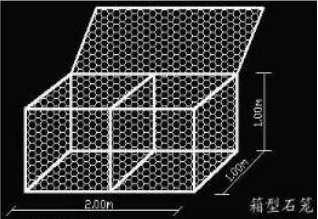
Gerbin Network (Eco-Green Grid)
(4) Nutritional Geotextiles
Nutritional geotextiles are composed of a layer of non-woven fabric and a layer of animal and plant fiber felt. The decomposition of plant fibers in the felt layer can enhance the osmotic resistance of plant cells, and the decomposition of animal keratin fibers can provide nitrogen fertilizer for plants for a long time.
Nutritional geotextile is a kind of functional non-woven geotextile specially designed for greening concrete (grass-growing concrete) masonry materials. This kind of non-woven geotextile can be evenly laid under the green concrete plate, compounded with a layer of felt which can slowly decompose the nutrients required by plants on the surface of the non-woven geotextile. While basically maintaining the filter performance of the non-woven geotextile, it can provide long-term slow-release fertilizer for plants on the concrete of the plant green belt, and solve the problem of filling materials caused by the limited space in the space of the green concrete. The problem of insufficient slow-release fertilizer provides nutrients for plants in rainwater wetlands.
Teandersheng Synthetic Materials Co., Ltd. welcomes your call to consult geosynthetics geogrid, geotextile, geomembrane, tunnel waterproof board, EVA waterproof board, plastic drainage board and other geotechnical materials.
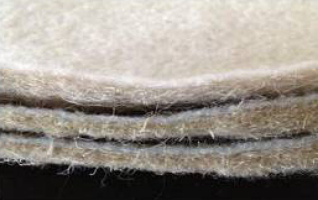
Nutritional Geotextiles
undefined




